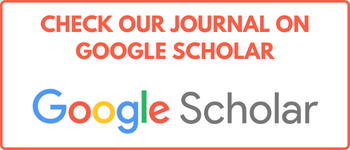This study investigated the principals’ leadership capacity and teachers’ morale of secondary schools of MBHTE-Sulu during School Year 2021-2022. Specifically, it aimed to determine the demographic profile of teacher-respondents in terms of gender, age, civil status, length of service and educational attainment and to identify the level of principals’ leadership capacity of secondary schools of MBHTE-Sulu in terms of professional development, instructional supervision, and classroom resources. The extent of teachers’ morale of secondary schools of MBHTE-Sulu in terms of workplace, workload, the opportunity for promotion, salary and work relationship with school principal was also determined. Further, this study ascertained if there is a significant difference in the level of principals’ leadership capacity and teachers’ morale when the data are classified according to their profile. Likewise, it determined if there is a significant correlation among the sub-categories subsumed under the level of principals’ leadership capacity and the extent of teachers’ morale of secondary schools of MBHTE-Sulu.
A descriptive-correlational research design was employed. Two hundred (200) secondary school teachers of MBHTE-Sulu who are currently teaching in different secondary schools in the 19 municipalities of the Province of Sulu during the School Year 2021-2022 served as respondents of the study. They were selected using purposive sampling. The profile of the respondents was tabulated and analyzed using frequency count and percentage. The second and third research questions were analyzed using mean and standard deviation, while the fourth and fifth research questions were analyzed using t-test for independent samples and analysis of variance. Moreover, the sixth research question was analyzed using Pearson Product Moment Correlation Coefficient (Pearson’s r).
The findings of study revealed the following: 1) Out of 200 teacher-respondents, majority are female, within 41-59 years old, are married in status, have 11-20 of length of service, have Teacher I rank, and have only bachelor’s degree; 2) Principals’ leadership capacity of MBHTE-Sulu is generally rated as above average. That is, principals are perceived to have above average of their ability and competence to discharge their duties and skillful performance of their functions in accomplishment of school objectives. This ability includes the provision of professional development, instructional supervision, and classroom resources; 3) Teacher-respondents strongly agreed that elementary school teachers of MBHTE-Sulu are happy in their work environment. They are perceived to have high extent in intrinsic motivation, job satisfaction and organizational commitment, meaningfulness of the job and work pride in relation to workplace, workload, opportunity for promotion, salary, and work relationship with school principal; 4) On the average, there is no significant difference in the level of principals’ leadership capacity data are categorized according to gender, position and educational attainment. But there is significant differences found in terms of age, civil status, and length of service wherein teacher-respondents within 50 years & above of age, married, and have 31 years & above of length of service have better ways in perceiving the level of principals’ leadership capacity; 5) On the average, there is no significant difference in the extent of teachers’ morale when data are categorized according to gender, position, and educational attainment. But there is significant difference found in terms of age, civil status, and length of service wherein teacher-respondents within 41-50 years of age, married, and have 31years & above of length of service have better ways in perceiving the extent of teachers’ morale; and 6) There is almost negligible correlation between level of principals’ leadership capacity and teachers’ morale of teachers at MBHTE-Sulu. That is, teachers of MBHTE-Sulu who generally perceived the level of principals’ leadership capacity as “above average” most probably not the same group of teachers who perceived the extent of teachers’ morale as “strongly agree” respectively.






